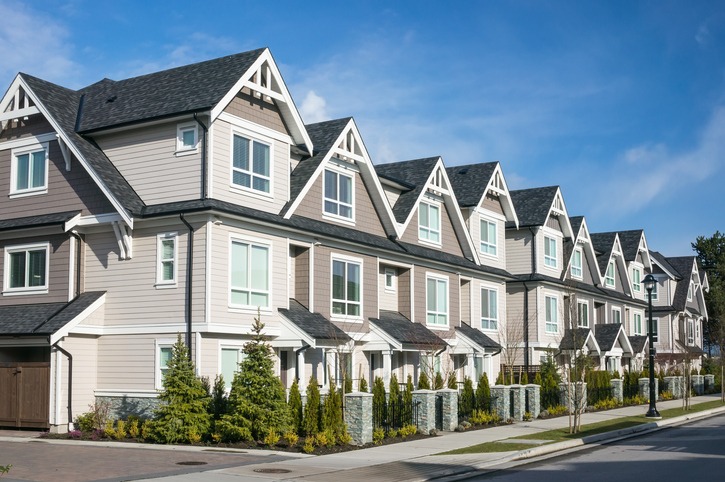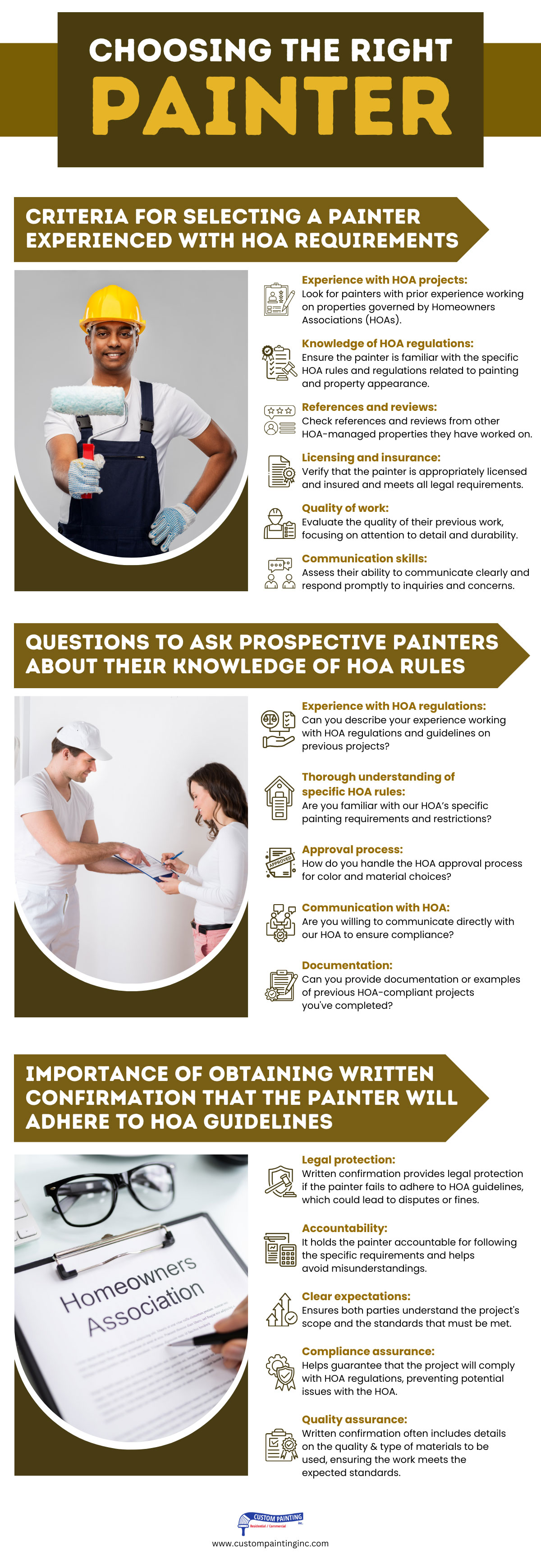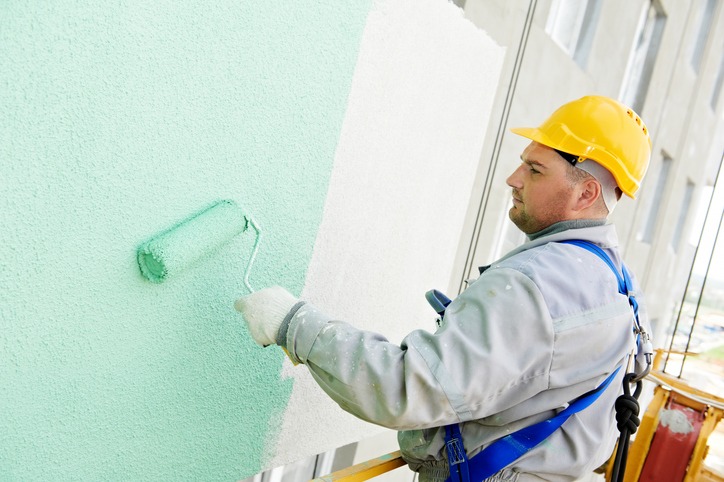The importance of adhering to homeowners association (HOA) requirements
Homeowners associations (HOAs) maintain the residential communities’ aesthetic appeal, safety, and overall values. Adhering to HOA requirements ensures all residents follow agreed-upon standards, which helps preserve the neighborhood’s uniformity and appeal. Compliance with these regulations also prevents disputes among neighbors and can significantly enhance property values.
This adherence is especially relevant for apartments and condominiums. The close living quarters mean that individual actions significantly impact the community. In such settings, HOA rules cover noise levels, pet policies, shared area maintenance, and other aspects. These aspects ensure a harmonious living environment. Following these guidelines allows residents to contribute to a pleasant and cohesive community experience, benefiting everyone involved.
Understanding HOA requirements
Definition and purpose of HOAs
Homeowners associations (HOAs) enforce rules for properties and residents within their community or subdivision. Their primary purpose is to maintain property values, ensure a cohesive aesthetic within the community, and manage shared amenities and services. Community members typically pay fees to the HOA, which fund the maintenance of common areas and enforcement of the community’s rules and regulations.
Common HOA rules related to property appearance and maintenance
- Lawn and landscaping – Requirements for maintaining lawns, gardens, and other landscaping elements, such as mowing frequency, types of plants allowed, and weed control.
- Exterior structures – Rules regarding the appearance and maintenance of exterior structures like fences, mailboxes, and sheds, including material and design standards.
- Home exteriors – Standards for the upkeep of the home’s exterior, including the condition of siding, roofs, windows, and doors.
- Trash and recycling – Guidelines for placing and timing of the trash and recycling bins.
- Vehicle parking – Restrictions on where and how vehicles can be parked, including limitations on parking commercial vehicles, RVs, or boats.
- Noise and nuisances – Rules to minimize noise and other nuisances that could disturb neighbors, such as restrictions on loud music or pet behavior.
Specific painting requirements imposed by HOAs
- Color schemes – HOAs usually provide a pre-approved palette of colors from which homeowners must choose. It ensures the community maintains a cohesive and aesthetically pleasing appearance. Deviating from these colors typically requires special approval.
- Types of paint – Regulations may specify the type of paint to be used. They require exterior-grade paint that is durable and can withstand weather conditions.
- Frequency of repainting – HOAs might mandate how often homes need repainting. They want to ensure the houses do not detract from the community’s appearance and remain in good condition. It could be every 5-10 years, depending on the HOA’s standards and the local climate.
- Approval process – Homeowners must formally request approval before undertaking any painting project. This process ensures that the chosen colors and types of paint comply with HOA guidelines.
- Trim and accent colors – There may be additional rules for painting trim, doors, and other accent features. These rules might be subject to different color choices or standards compared to the main body of the house.
These rules and regulations help maintain visual harmony and property values within the community, benefiting all residents.
Importance of compliance
Consequences of non-compliance for homeowners
Failure to comply with local HOA guidelines will result in the following:
- Fines – Homeowners may face monetary penalties for not adhering to HOA guidelines. These fines can accumulate if the non-compliance continues.
- Legal action – Persistent non-compliance can lead to legal action taken by the HOA, resulting in court appearances and legal fees.
- Forced repainting – The HOA may mandate that homeowners repaint their property to meet community standards, often at the homeowner’s expense.
Impact on property value and neighborhood aesthetics
- Property value – Non-compliance can lower property values in the neighborhood by creating an unattractive and inconsistent environment.
- Neighborhood aesthetics – Consistent adherence to HOA guidelines helps maintain a cohesive and visually appealing community. This can be disrupted by non-compliance, leading to a decline in overall neighborhood aesthetics.
Potential conflicts with neighbors and the HOA board
- Conflict with neighbors – Non-compliance can cause friction with neighbors who adhere to the rules and may view the non-compliant homeowner as disregarding community standards.
- Conflicts with the HOA board – Persistent non-compliance can lead to ongoing disputes with the HOA board, resulting in strained relations and potential escalation to legal proceedings.
These points summarize the consequences and impacts of non-compliance with HOA guidelines for homeowners.
Choosing the right painter
Criteria for selecting a painter experienced with HOA requirements
- Experience with HOA projects – Look for painters with prior experience working on properties governed by Homeowners Associations (HOAs).
- Knowledge of HOA regulations – Ensure the painter is familiar with the specific HOA rules and regulations related to painting and property appearance.
- References and reviews – Check references and reviews from other HOA-managed properties they have worked on.
- Licensing and insurance – Verify that the painter is appropriately licensed and insured and meets all legal requirements.
- Quality of work – Evaluate the quality of their previous work, focusing on attention to detail and durability.
- Communication skills – Assess their ability to communicate clearly and respond promptly to inquiries and concerns.
Questions to ask prospective painters about their knowledge of HOA Rules
- Experience with HOA regulations – “Can you describe your experience working with HOA regulations and guidelines on previous projects?”
- Thorough understanding of specific HOA rules – “Are you familiar with our HOA’s specific painting requirements and restrictions?”
- Approval process – “How do you handle the HOA approval process for color and material choices?”
- Communication with HOA – “Are you willing to communicate directly with our HOA to ensure compliance?”
- Documentation – “Can you provide documentation or examples of previous HOA-compliant projects you’ve completed?”
Importance of obtaining written confirmation that the painter will adhere to HOA guidelines
- Legal protection – Written confirmation provides legal protection if the painter fails to adhere to HOA guidelines, which could lead to disputes or fines.
- Accountability – It holds the painter accountable for following the specific requirements and helps avoid misunderstandings.
- Clear expectations – Ensures both parties understand the project’s scope and the standards that must be met.
- Compliance assurance – Helps guarantee that the project will comply with HOA regulations, preventing potential issues with the HOA.
- Quality assurance – Written confirmation often includes details on the quality and type of materials to be used, ensuring the work meets the expected standards.
Following these guidelines allows you to choose the right painter who is skilled and well-versed in meeting HOA requirements. It ensures a smooth and compliant painting project.
Communication with the HOA
Steps to take before starting a painting project
- Review HOA guidelines: Obtain and thoroughly review the HOA’s rules and regulations regarding exterior painting.
- Choose paint colors: Select paint colors that are either pre-approved by the HOA or likely to be approved based on their guidelines.
- Prepare a proposal: Create a detailed proposal including the chosen colors, paint samples, and a description of the areas for painting.
- Submit a proposal for approval: Submit the proposal to the HOA board or architectural review committee for approval, ensuring they follow specific submission guidelines.
- Wait for approval: Wait for written approval from the HOA before proceeding with any work. It might take a few weeks, depending on the HOA’s schedule.
Documenting and reporting compliance to the HOA
- Keep records: Maintain detailed records of all communications with the HOA, including proposal submissions, approvals, and any correspondence.
- Photographic evidence: Take before and after photos of the areas for painting. Ensure the photographs clearly show compliance with the approved plans.
- Completion report: Prepare a completion report summarizing the work done. The report should include the timeline, paint colors used, and photographic evidence of the completed project.
- Submit a report to HOA: Submit the completion report to the HOA as proof of compliance. Include a cover letter explaining the project has been completed per the approved plans.
Tips for effective communication with HOA representatives
- Be Respectful and professional: Always communicate respectfully and professionally, regardless of the circumstances.
- Be clear and concise: Keep your communications clear and to the point. Provide all necessary details but avoid unnecessary information.
- Follow HOA protocols: Follow the HOA’s preferred communication methods, whether they send email, mail, or an online portal.
- Document everything: Keep a record of all communications, including dates, times, and the content of the messages.
- Be proactive: Foresee and resolve issues early before they could become problems. Promptly respond to requests for additional information or clarification.
- Seek clarification: Suppose you’re unsure about any aspect of the process or the HOA’s requirements. Please don’t hesitate to ask for clarification.
- Stay informed: Keep yourself updated on any changes to HOA rules or procedures that might affect your project.
Tips for homeowners
Checklist to ensure compliance with HOA painting requirements
- Review HOA guidelines – Obtain and thoroughly read your HOA’s painting guidelines and color palettes.
- Obtain approval – Submit a detailed painting plan to the HOA for approval, including color samples and painter details.
- Use approved colors – Ensure you select colors from the approved HOA color palette.
- Hire licensed professionals – Choose licensed and insured painters familiar with HOA requirements.
- Schedule inspections – Coordinate with the HOA to schedule any required inspections before, during, and after the painting.
- Document everything – Keep detailed records of all communications and approvals from the HOA.
Resources for finding HOA-Compliant painters
- HOA recommendations – Ask your HOA for a list of recommended or previously approved painters.
- Online directories – Use websites like Angi (formerly Angie’s List), HomeAdvisor, or Yelp to find highly rated painters familiar with HOA rules.
- Local community boards – Check local community boards or social media groups for recommendations from neighbors.
- Professional associations – Look for painters who are members of professional associations, such as the Painting Contractors Association (PCA).
Advice on maintaining good relations with the HOA
- Communicate early and often – Keep open lines of communication with the HOA about your plans and timelines.
- Be respectful and cooperative – Show respect for the HOA rules and the people enforcing them and be willing to cooperate.
- Attend meetings – Participate in HOA meetings to stay informed and build rapport with board members.
- Resolve disputes amicably – Address conflicts or concerns calmly and seek amicable resolutions.
- Stay informed – Keep updated with changes in HOA rules and regulations to ensure ongoing compliance.
Following these tips ensures a smooth painting process and maintains a positive relationship with your HOA.
Conclusion
Homeowners Associations (HOAs) are vital for preserving community aesthetics, safety, and property values by ensuring residents follow agreed-upon standards. Compliance prevents disputes and enhances property values. In apartments and condos, following HOA rules on noise, pets, and maintenance is crucial for a harmonious community. Residents benefit from a pleasant environment when everyone adheres to guidelines.
Homeowners should prioritize compliance with HOA requirements to foster a harmonious and attractive community. By adhering to these guidelines, residents help maintain property values and create a pleasant living environment for everyone. Embracing these standards benefits individual homeowners and the entire neighborhood, ensuring a thriving and cohesive community.
Call to action
Custom Painting, Inc. experts serve local HOAs efficiently. If we are not included in your community’s preferred list of paint contractors, please let us know. We are the top professional painters in the Bay Area and are ready to assist all HOAs in the region. Just pick up the phone and dial 925-294-8062 or complete the contact form to schedule a free estimate with us at Custom Painting, Inc. today!






